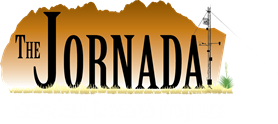| Title | Impacts of projected mid-century temperatures on thermal regimes for select specialty and fieldcrops common to the southwestern U.S. |
| Publication Type | Conference Paper |
| Year of Publication | 2015 |
| Authors | Estell RE, Brody-Lopez N, Dialesandro J, Steele C, Rango A. |
| Conference Name | American Geophysical Union Fall Meeting |
| Date Published | 12/2015 |
| Publisher | AGU |
| Conference Location | San Francisco, CA |
| ARIS Log Number | 324049 |
| Abstract | The impacts of projected temperature increases in agricultural ecosystems are complex, varying by region, cropping system, crop growth stage and humidity. We analyze the impacts of mid-century temperature increases on crops grown in five southwestern states: Arizona, California, New Mexico, Nevada and Utah. Here we present a spatial impact assessment of common southwestern specialty (grapes, almonds and tomatoes) and field (alfalfa, cotton and corn) crops. This analysis includes three main components: development of empirical temperature thresholds for each crop, classification of predicted future climate conditions according to these thresholds, and mapping the probable impacts of these climatic changes on each crop. We use 30m spatial resolution 2012 crop distribution and seasonal minimum and maximum temperature normals (1970 to 2000) to define the current thermal envelopes for each crop. These represent the temperature range for each season where 95% of each crop is presently grown. Seasonal period change analysis of mid-century temperatures changes downscaled from 20 CMIP5 models (RCP8.5) estimate future temperatures. Change detection maps represent areas predicted to become more or less suitable, or remain unchanged. Based upon mid-century temperature changes, total regional suitable area declined for all crops except cotton, which increased by 20%. For each crop there are locations which change to and from optimal thermal envelope conditions. More than 80% of the acres currently growing tomatoes and almonds will shift outside the present 95% thermal range. Fewer acres currently growing alfalfa (14%) and cotton (20%) will shift outside the present 95% thermal range by midcentury. Crops outside present thermal envelopes by midcentury may adapt, possibly aided by adaptation technologies such as misters or shade structures, to the new temperature regime or growers may elect to grow alternate crops better suited to future thermal envelopes. |


